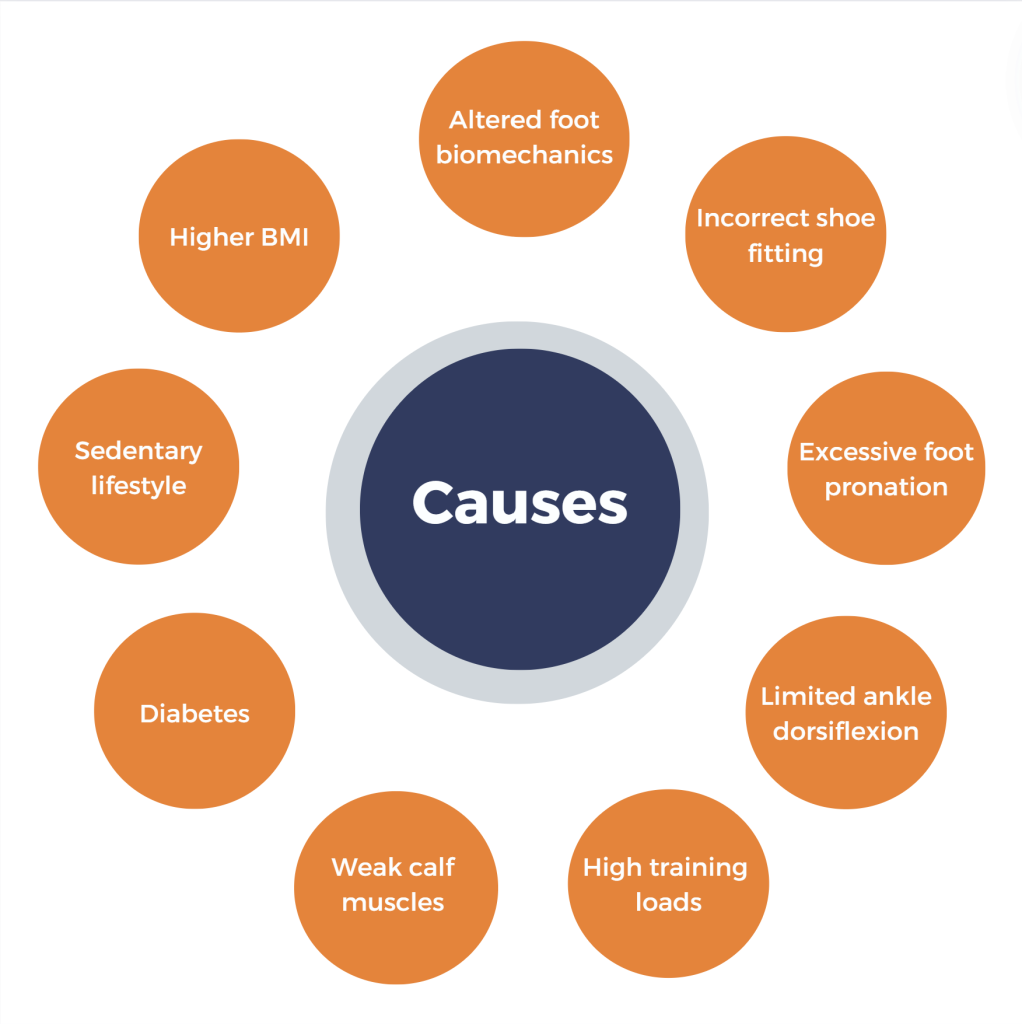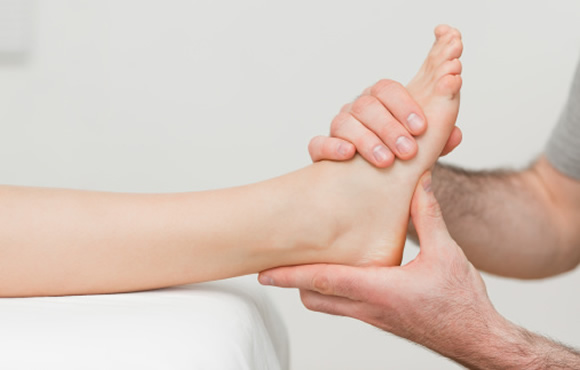Plantar heel pain (commonly referred to as plantar fasciitis or plantar fasciopathy) is the most common foot condition treated by our physiotherapists.
Plantar fasciopathy is a painful condition resulting in symptoms of pain under the heel. It is often caused by overuse of the plantar fascia or arch tendon of the foot. The plantar fascia is a broad, thick band of tissue that runs from under the heel bone to the front of the foot and fascia insertion.
Plantar fasciopathy is most common in sports which involve running, dancing or jumping. At particular risk are runners and walkers who overpronate (excessive rolling in or flattening of the foot).
What is the Plantar Fascia?
The Plantar Fascia is a broad, thick band of tissue that runs from under the heel to the front of the foot.
Plantar fasciopathy can also be known as a ‘heel spur’ although they are not strictly the same. A heel spur is a bony growth that occurs at the attachment of the plantar fascia to the heel bone (calcaneus). A heel spur can be present on a foot with no symptoms at all and a painful heel does not always have a heel spur present.
What Causes Plantar Fasciopathy?
 A common cause is very tight or weak calf muscles which leads to overpronation of the foot. This in turn may flatten the arch of the foot, producing repetitive over-stretching of the plantar fascia leading to irritation. The cause of pain is thought to be related to degeneration of the fascia at its attachment to the calcaneus (heel bone).
A common cause is very tight or weak calf muscles which leads to overpronation of the foot. This in turn may flatten the arch of the foot, producing repetitive over-stretching of the plantar fascia leading to irritation. The cause of pain is thought to be related to degeneration of the fascia at its attachment to the calcaneus (heel bone).
Excessive walking in footwear which does not provide adequate arch support has also been attributed to plantar fasciopathy. In addition, overweight individuals are more at risk of developing the condition due to the excess weight impacting on the foot.
However, the most common cause of heel pain is as a result of a sudden increase in activity, e.g someone deciding to take up running, dramatically increasing the acute load on the fascia.
What are the Signs and Symptoms?
- Heel pain, under the heel and usually on the inside, at the origin of the attachment of the fascia.
- Pain when pressing on the inside of the heel and sometimes along the arch.
- Pain is usually worse first thing in the morning as the fascia tightens up overnight often creating the sensation of walking on a pebble. After a few minutes it eases as the foot gets warmed up.
- As the condition becomes more severe the pain can get worse throughout the day if activity continues.
- Stretching the plantar fascia may be painful.
- Sometimes there may also be pain along the outside border of the heel. This may occur due to the offloading of the painful side of the heel by walking on the outside border of the foot.
How is Plantar Fasciopathy Diagnosed?
A diagnosis can usually be based on a thorough assessment by one of our physiotherapists, reviewing both patient history and clinical presentation, rather than imaging.
How is Plantar Fasciopathy Treated?
It is important to modify aggravating activities. The plantar fascia must initially be offloaded to reduce pain symptoms. By pushing through pain and walking on the painful heel you are continually aggravating the injury. Reduce unnecessary activities which place additional stress on the fascia.
Strengthening and stretching of the calf muscles may form an important part of your treatment program and ongoing prevention. But the key to the management of plantar fasciopathy is to improve the capacity of the plantar fascia tissues to meet the load demand of your daily and athletic activities. This can be achieved with a tailored progressive loading program under the guidance of one of our physiotherapists.
If heel pain that you are managing yourself does not improve after a few days, it is best to contact one of our Jubilee Sports Physiotherapy clinics to get an accurate diagnosis of the injury and the most appropriate treatment plan.
A biomechanical assessment may determine if you overpronate while walking and identify tight muscles and stiff joints of the foot and ankle. Prescription of a fitted orthotic or strapping of the arch of the foot can improve foot biomechanics if overpronation is a problem and reduce pain symptoms significantly.
For more information regarding injury management and prevention contact one of the physiotherapists at Jubilee Sports Physiotherapy.






















